How to choose the tastiest and sweetest melon
Melon is a frequent guest on the dinner table in summer and autumn. Juicy and sweet, it pleasantly cools, healthy and tasty fruit salads, summer cocktails and ice cream are prepared from the melon. There are a few tips to follow when choosing a ripe melon from the market.
Let's figure out which varieties are the sweetest and most juicy, how they look and what properties they have.
The content of the article
How to choose the most delicious melon correctly
It is recommended to buy a melon in stores or in the market. The fruits should not lie on the ground - they can get sick or catch an infection. Pay attention to the storage conditions of the crop. Unsanitary conditions are unacceptable, it is not advised to buy such a product.
Melon ripeness is determined by the following criteria: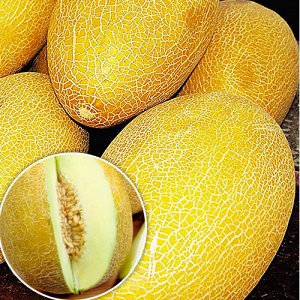
- dull sound when tapping;
- rich sweet aroma;
- springy and resilient crust;
- dry stalk;
- the absence of cracks and stains;
- uniform color.
The sweetest varieties
What is the tastiest melon? Consider the sweetest and juiciest varieties, find out their characteristics and features.
Cantaloupe
Melon varieties Cantaloupe powerful and spreading, the lashes are thick and long. They are planted in fields or specialized farms. The shape of the fruit is round-oval or flattened. The weight of one is from 1 to 3 kg, the color is pale orange or green, depending on the region of cultivation.
The pulp is rich orange in color, soft and juicy. Cantaloupe is good for fresh consumption.
Interesting. The homeland of the Cantaloupe variety is Armenia. It was from this country that the spread of beautiful and sweet fruits around the world began.
Kassaba
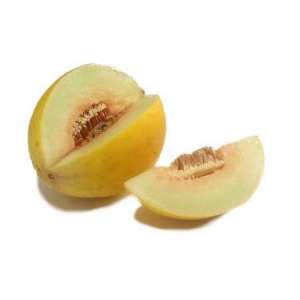
Asian Kassaba melons are popular because they acquire their sweetness during storage. There are several varieties of the Kassaba variety. They differ from each other in color, thickness of the peel, and taste. Some fruits are smooth and yellow, others are wrinkled and dark orange.
Popular varieties Kassaba Zhukovsky, Kassaba spotted, Kassaba Honey Dew. Melon weight is about 2 kg, aroma is neutral. The pulp is honey and sweet, it is universal in application.
Crenshaw
This variety came to Russia from America, where it appeared in 1929. Fruits are small, rounded, with an elongated tip. The weight of one varies from 1 to 2 kg.
The color is yellow-green, the skin is rough and dense. The aroma is intense, the taste is sweet, the pulp is fibrous with a pale orange color. Crenshaw is used for fresh consumption. Small fruits are convenient to take with you to a picnic or barbecue.
Torpedo
The variety got its name due to its elongated oblong shape. Grow Torpedo started in Uzbekistan. The plant is small, lashes are of medium length, dark green. Fruit weight 3-7 kg, yellow-orange peel, smooth with a mesh, thick, so the crop is suitable for long-term storage and long-distance transportation. The flesh is ivory, tender and juicy. The taste and aroma are pronounced. The torpedo is famous for its high and stable yield - from 1 m² up to 10 kg are harvested.
Interesting. The pulp of the Torpedo variety is suitable for making a pie or manna with melon. To do this, you can use a multicooker. The filling is made from the pulp of melon, cottage cheese, apples and mint. Lemon juice is added for piquancy.
Galia
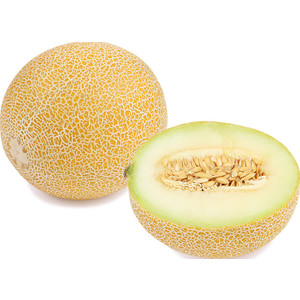
The Galia variety is famous for its original appearance. Fruits are rounded, with a rough, reticulated skin of green-yellow color. Melon weight is about 4 kg. The pulp is sweet, light beige in color. The Galia variety is unpretentious in maintenance, suitable for long-distance transportation, and is stored for a long time. The fruiting period is extended, ripe fruits are harvested from August to September. The crop is stored for up to three weeks.
Collective farmer
Melon Collective farmer countrywide. The variety is cold-resistant, immune to diseases and pests. The fruits are spherical, the tips are slightly flattened.
Weight varies from 1 to 2.5 kg, the peel is dense, yellow-green in color, in a mesh. The flesh is light creamy, crispy and sweet. The collective farmer has a high sugar content.
Aikido
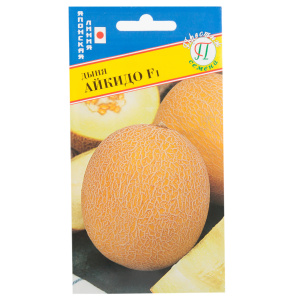
Aikido is a hybrid that is highly resistant to adverse climatic conditions. It tolerates frost, rain and fog without consequences.
The fruits are round and spherical, the weight of one is about 2 kg. The rind is bright yellow saturated color, the pulp is dense and juicy, the color is light.
The crop is notable for its attractive commercial qualities, therefore Aikido is grown on an industrial scale for sale.
Cinderella
Cinderella melon is grown for fresh consumption. Due to the thin skin, the fruit is not suitable for long-term storage. The melon is compact, weighing up to 2 kg. The peel is yellow-green, in places rough.
The pulp is moderately sweet and juicy, light in color. The crop is also used for processing: delicious compotes, jams, and preserves are obtained from it.
Golden
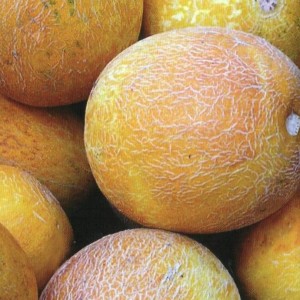
This variety appeared thanks to the labors of breeders from Krasnodar. Of the advantages of the variety, they note an attractive presentation, transportability, versatility in application.
The shape is rounded-oblong, the peel is dense, orange. Weight about 2 kg, tender pulp, white color. The aroma is pleasant, refreshing. Golden is planted in regions with a temperate climate.
Ethiopian
Plants are large, with long shoots and a developed root system. Externally melon Ethiopian looks like a pumpkin. The fruits are round, strongly segmented.
The peel is colored pumpkin orange, dense, so the harvest is stored for up to one month. Weight - from 4 to 8 kg, yield - 8 kg per 1 m². The pulp is creamy, sweet and juicy.
How to grow sweet melon varieties
Fertile and loose lands are chosen for cultivation. The soil is dug up, cleaned of debris and weeds, liquid manure or dung is introduced. Melon prefers a mixture of loamy and sandy loam lands, it is planted on spacious hilly beds. The planting scheme depends on the variety - usually it is 1x1 m. It is not recommended to plant the melon close to each other: the roots do not have enough space for proper development and growth.
Important! Melon is a thermophilic culture, so it is planted with seedlings. For this, the seeds are disinfected with aloe juice or a weak solution of boric acid, germinated in damp gauze for 3-5 days. As soon as the first shoots appear, they are placed in prepared containers with earth.
Sweet melon care consists of regular watering and feeding. Water in the morning or in the evening 1 time in 5 days. About 1.5 liters of warm clean water is used per plant. Before watering, the beds are loosened and weeds are removed - this makes the soil lighter and more nutritious. For proper development, gardeners apply mineral and organic fertilizers.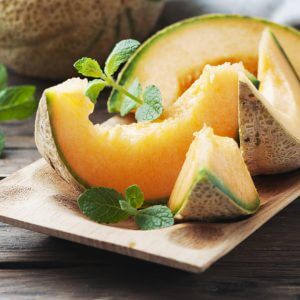
Melon is fed every two weeks. For fertilizers use:
- liquid manure or dung;
- dry wood ash based solution;
- yeast and iodine;
- Bordeaux liquid;
- urea;
- superphosphate;
- ammonium nitrate.
Conclusion
When buying a melon, pay attention to the aroma of the fruit. In ripe ones, it is sweet, honey. The peel of mature melons is dense, the sound is muffled when tapped, the stalk is dry.
To grow a sweet and juicy fruit in the garden, it is recommended to follow the rules of care: water, fertilize and loosen the beds on time. Of the sweetest varieties, torpedo melons, Ethiopka, Cinderella are distinguished. They are versatile in use, distinguished by tasty and juicy pulp.